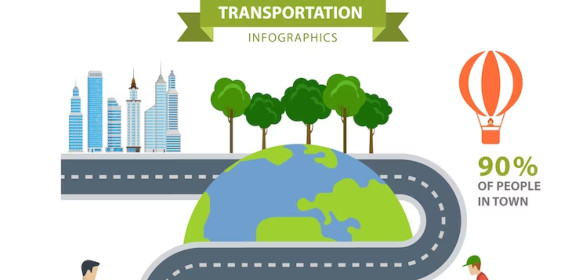What is the primary characteristic of passive transport?
Requires energy
Moves substances against a concentration gradient
Moves substances down a concentration gradient
Uses transport proteins only


Understanding the mechanisms of passive transport is essential for fields such as medicine, biology, and biochemistry, as it helps researchers develop treatments for various diseases and understand how molecules move throughout the body. In this article, we will explore examples of the different types of passive transport and their importance in maintaining the proper functioning of living organisms.
Passive transport refers to the movement of molecules across a cell membrane without the need for energy expenditure by the cell. This process occurs naturally and is driven by concentration gradients and nucleic acids, which cause molecules to move from an area of high concentration to an area of low concentration. Passive transport can occur through several mechanisms, including diffusion, osmosis, and facilitated diffusion.
Passive transport is a fundamental process that occurs naturally in living organisms. It involves the movement of molecules across a cell membrane without the need for energy expenditure by the cell. This process is critical for maintaining the proper concentrations of essential molecules and nutrients within cells and tissues. Passive transport occurs through several mechanisms, including diffusion, osmosis, and facilitated diffusion.
The process occurs in three primary ways: simple diffusion, osmosis, and facilitated diffusion.
During simple diffusion, small molecules such as oxygen and carbon dioxide move through the cell membrane from areas of high concentration to areas of low concentration. Molecules move from an area of high concentration to an area of low concentration through the lipid bilayer. This process continues until the concentration of the molecule is equal on both sides of the membrane.
Osmosis is the movement of water molecules across a selectively permeable membrane. Water molecules move from an area of low solute concentration to an area of high solute concentration through the selectively permeable membrane. This chemical reaction process continues until the concentration of solutes is equal on both sides of the membrane.
The movement of elements and molecules across a membrane is referred to as “facilitated diffusion,” and it occurs with the assistance of specialized transport proteins. In order for certain molecules to go down their concentration gradient, these proteins form a channel through which they may flow.
The particular transport protein in the cell membrane is where molecules bind and undergo mutation. A conformational shift takes place in the transport protein, which subsequently makes it possible for the molecule to pass through the protein and enter the cell. This process will keep going on until the concentration of the molecule on each side of the membrane is exactly the same.
FAQs
Passive transport refers to the movement of molecules across a cell membrane without the need for energy expenditure by the cell, while active transport requires energy to move molecules against their concentration gradient.
When molecules move across a membrane from an area of high concentration to an area of low concentration, this process is referred to as simple diffusion. On the other hand, facilitated diffusion involves the utilization of transport proteins that are specifically designed to move molecules across a membrane.
Osmosis is the movement of water molecules across a selectively permeable membrane, from an area of low solute concentration to an area of high solute concentration, until the concentration is equal on both sides of the membrane. Osmosis plays a crucial role in maintaining the balance of fluids in living organisms.
In conclusion, passive transport occurs naturally in living organisms through several mechanisms, including simple diffusion, osmosis, and facilitated diffusion. These processes allow molecules to move across cell membranes without the need for energy expenditure by the cell. Understanding how passive transport takes place is essential in fields such as medicine, biology, biotechnology, and biochemistry, as it helps researchers develop treatments for various diseases and understand how molecules move throughout the body.
Text prompt
Add Tone
10 Examples of Public speaking
20 Examples of Gas lighting
What is the primary characteristic of passive transport?
Requires energy
Moves substances against a concentration gradient
Moves substances down a concentration gradient
Uses transport proteins only
Which type of passive transport involves the movement of water across a selectively permeable membrane?
Osmosis
Facilitated diffusion
Simple diffusion
Active transport
In which scenario does facilitated diffusion occur?
Movement of ions through protein channels
Movement of water through the lipid bilayer
Movement of molecules from high to low concentration without protein assistance
Movement of molecules against a concentration gradient using energy
What type of molecules typically use simple diffusion to cross the cell membrane?
Large polar molecules
Small nonpolar molecules
Ions
Proteins
How does the concentration gradient affect the rate of passive transport?
The steeper the gradient, the slower the rate
The steeper the gradient, the faster the rate
The concentration gradient has no effect
The rate is constant regardless of the gradient
Which type of passive transport would be involved in the uptake of glucose into a cell?
Osmosis
Simple diffusion
Facilitated diffusion
Active transport
In which type of passive transport do molecules move through the lipid bilayer without the aid of proteins?
Facilitated diffusion
Osmosis
Simple diffusion
Endocytosis
What is the role of transport proteins in facilitated diffusion?
To actively move molecules against the gradient
To provide energy for molecule movement
To assist molecules in crossing the membrane more easily
To block certain molecules from entering the cell
What type of passive transport allows ions like sodium or potassium to move across the cell membrane?
Simple diffusion
Osmosis
Facilitated diffusion
Exocytosis
How does passive transport differ from active transport in terms of energy use?
Passive transport requires energy, while active transport does not
Active transport requires energy, while passive transport does not
Both passive and active transport require energy
Neither passive nor active transport requires energy
Before you leave, take our quick quiz to enhance your learning!

